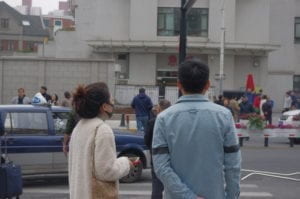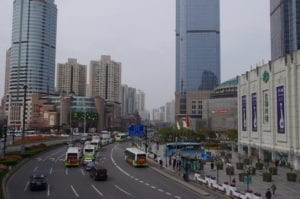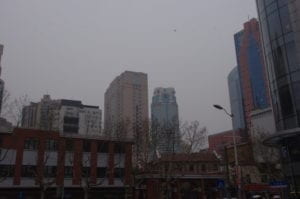Project Description:
GENERATED POWER is a geocinema short film exploring the former Nanshi Power Plant and current Power Station of Art in Shanghai’s Huangpu district. There were many different aspects of this site to consider: its historical significance, its role alleviating inequality, its transition from electrical power to art as an agent of soft power, gentrification, and the model of the post-industrial art gallery and white cube aesthetic. In the end, this proved quite challenging; there were so many different approaches to this narrative, we struggled to find a common thread between all of our ideas.
SmartShanghai describes this museum as an “impressive but cumbersome space, a huge building likened by curator Qui Zhijie to London’s Tate Modern. The PSA may have similar hardware to that legendary institution but it doesn’t have the software – the staffing, budgets, etc – to match.” We wanted to highlight how empty most of this museum is, even during exhibits; if the PSA relies on people to generate power, what is its purpose when this space lies empty?
We visited the location three times after the end of the Shanghai Biennale, when the gallery was in transition. The first time, we collected shots from the front of the building, and the roof, in addition to audio. The second time, we collected footage from the front of the building and distance shots. The third time, I brought a cell phone into the museum and filmed the interior. We also had to collect additional assets, which we took from Youku, surveillance footage live streams, photo archives, etc.
Ultimately, we struggled with the time constraints of this project. While I view our project as a first draft, it would require several more iterations (editing the script and flow of ideas, deepening the analysis) in order to analyze this site as critically as we would have liked. Because we spent a lot of time investigating the history of this site and initially intended to take our project in a slightly different direction, we felt rushed in our analysis of the PSA’s current role. In the end, we felt overwhelmed by the amount of information we had, and I think would have benefited from creating more rules/constraints for ourselves earlier on.
Citations and References:
Consulate General of Switzerland in Shanghai. “Shanghai’s Power and Gas Situation .” Shanghai Flash , no. 1, 2008.
Henriot, Christian. “Regeneration and mobility: the spatial dynamics of industries in wartime Shanghai,” Journal of Historical Geography, vol. 38 issue 2. 2012.
Isenstadt, Sandy, Margaret M. Petty, and Dietrich Neumann. Cities of Light: Two Centuries of Urban Illumination. , 2015. Internet resource.
“Revamped Plant to be Expo Highlight,” China Daily. 2008.
Personal Reflection:
Personally, I encountered a lot of difficulties with this project; I really enjoyed learning about the concept of geocinema but had a hard time visualizing matrix storyboarding, and drawing connections between the many different aspects of this site that we wrote down. We approached this project from several different directions, but decided to just go to the site first, collect assets, and write the storyboard second. This ended up presenting a lot of challenges (since we didn’t have rules/constraints in place when we filmed, and had a lot of different footage to comb through.) In the end, we decided to explore the relevance of the PSA when it is not in use.
I went to collect footage twice, first with Sabrina (to film the outside and rooftop view) and then by myself (to collect footage from inside the empty building). I also combed through surveillance footage looking for construction sites and power plants, screen captured satellite footage, looked for film footage from the inside of Chinese power plants on Youku, wrote the script, and recorded narration. If we had been given more time, I would have liked to edit the script a second time based on Ann’s feedback on Sunday night.


